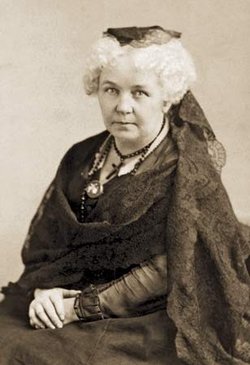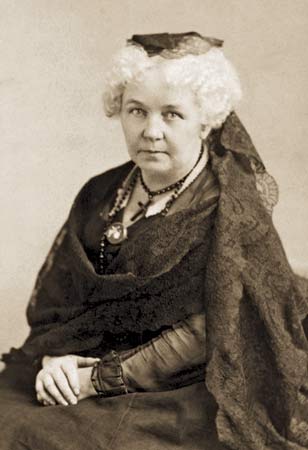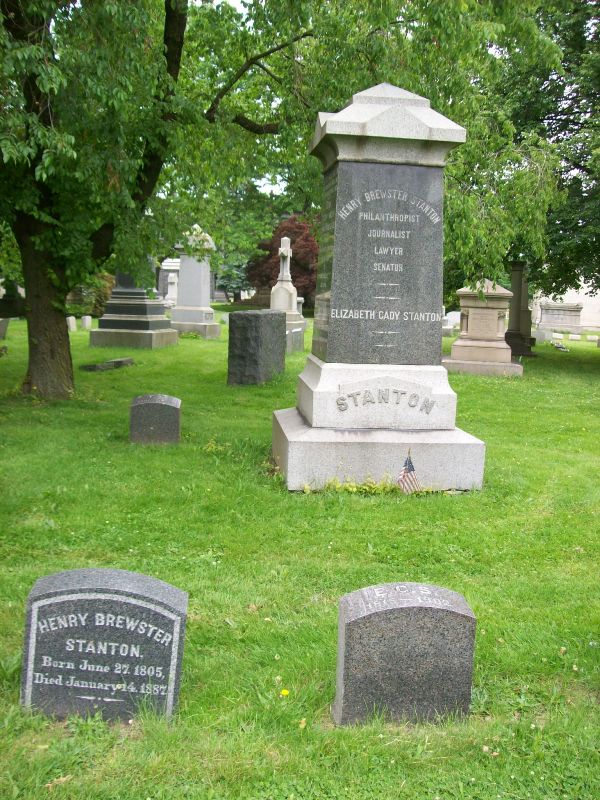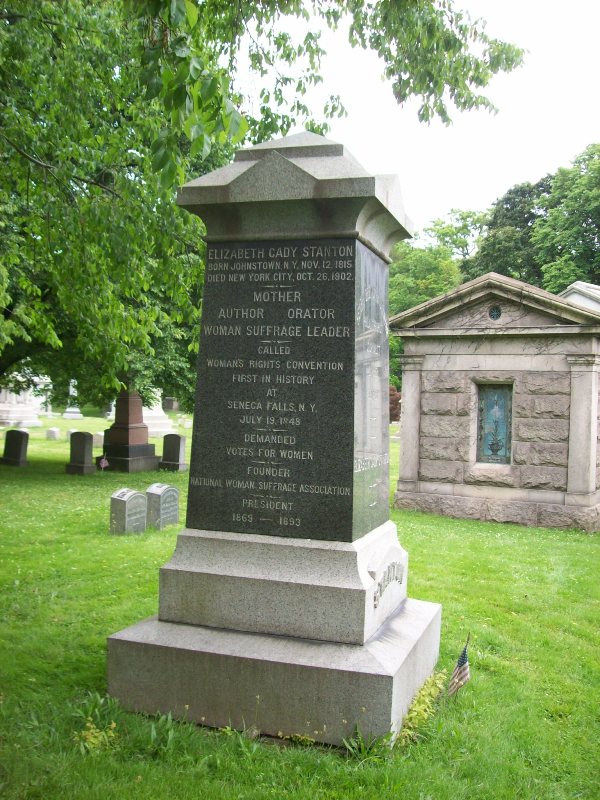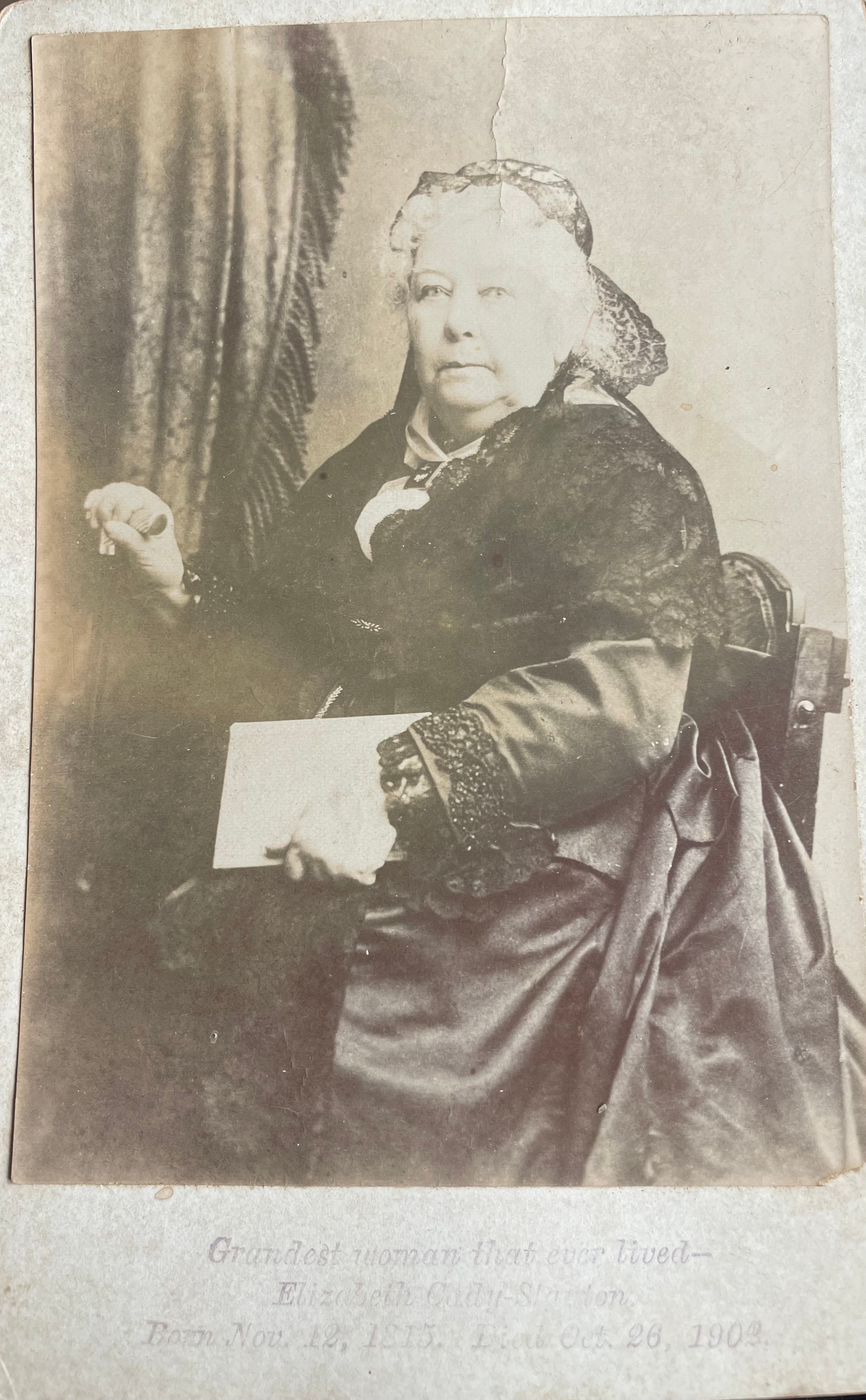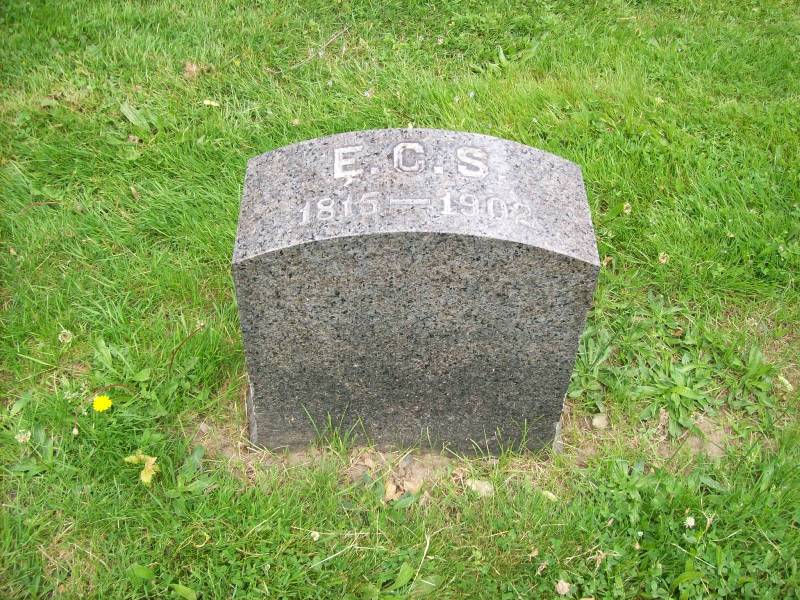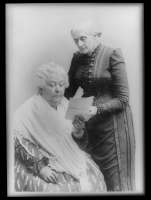Social Reformer. She was a leading figure of the women's rights movement in the United States. Born the eighth of eleven children of Margaret Livingston Cady and Congressman Daniel Cady, she received her formal education at the Johnstown Academy and Emma Willard's Troy Female Seminary. She acquired much legal education at home from her father, who later became a judge on the New York Supreme Court, and his students. Through her early involvement with the abolitionists, she met her husband, Henry B. Stanton, as well as several people who were also proponents of women's rights, including Lucretia Mott. She and Mott were the primary organizers of the 1848 Women's Rights Convention in Seneca Falls, New York. She was the first woman given permission to speak in front of the New York Legislature and was instrumental in the passage of the Married Woman's Property Act in New York in 1848. This act allowed women to be able to have custody of their children, hold property, make contracts, keep their own earnings and inheritance and sue in court. Other states continuing to enact Married Women's Property Laws, 28 states had such lawas by the end of the American Civil War. Another activist friend was Susan B. Anthony, who became a collaborator in civil rights. Anthony, who was single, was free to travel and stump for change, while Cady Stanton, who was constrained from travel by motherhood, wrote documents and speeches and devised ways to educate and agitate for winning support for reform. When she was finally free to travel regularly, she became one of the best known women in the United States. As President of the National Woman Suffrage Association, she was an outspoken social and political commentator, who debated major political and legal questions facing the United States. She toured the nation as a lecturer speaking on topics like maternity, the woman's crusade against liquor, child rearing, divorce law and constitutional questions. Creeping old age saw her give up the Presidency of the National Woman Suffrage Association and turn the mantle over to Susan Anthony. In retirement, her focus was on writing. It was then that she produced the first three volumes of a six volume History of Woman Suffrage in collaboration with Susan B. Anthony and Matilda Joslyn Gage, the controversial Woman's Bible, which affirmed her faith in a secular state and urged women to recognize how masculine theology obstructed their chances for achievement and advancement toward independence, and her autobiography, "Eighty Years and More: Reminiscences 1815-1897." Two weeks before her 87th birthday, Cady Stanton died of heart failure in her apartment in New York City that she shared with two of her grown children. She did not live to see the passage of the 19th Amendment, which occurred in 1920. At her funeral, the table upon which the "Declaration of Rights of the Women of the United States," which Stanton had written and signed at Seneca Falls was placed beside her casket. It now is on display at the Smithsonian Institute. When the 19th amendment was ratified, a statue of the three movement's leaders, Lucretia Mott, Elizabeth Cady Stanton and Susan B. Anthony, was erected in the Capitol Rotunda. After its unveiling, it was moved to the Crypt. Many attempts to move the monument back to the Capitol Rotunda had been blocked yet the statues returned to their original place in 1997. A World War II troop transport was named in her honor "USS Elizabeth C. Stanton."
Social Reformer. She was a leading figure of the women's rights movement in the United States. Born the eighth of eleven children of Margaret Livingston Cady and Congressman Daniel Cady, she received her formal education at the Johnstown Academy and Emma Willard's Troy Female Seminary. She acquired much legal education at home from her father, who later became a judge on the New York Supreme Court, and his students. Through her early involvement with the abolitionists, she met her husband, Henry B. Stanton, as well as several people who were also proponents of women's rights, including Lucretia Mott. She and Mott were the primary organizers of the 1848 Women's Rights Convention in Seneca Falls, New York. She was the first woman given permission to speak in front of the New York Legislature and was instrumental in the passage of the Married Woman's Property Act in New York in 1848. This act allowed women to be able to have custody of their children, hold property, make contracts, keep their own earnings and inheritance and sue in court. Other states continuing to enact Married Women's Property Laws, 28 states had such lawas by the end of the American Civil War. Another activist friend was Susan B. Anthony, who became a collaborator in civil rights. Anthony, who was single, was free to travel and stump for change, while Cady Stanton, who was constrained from travel by motherhood, wrote documents and speeches and devised ways to educate and agitate for winning support for reform. When she was finally free to travel regularly, she became one of the best known women in the United States. As President of the National Woman Suffrage Association, she was an outspoken social and political commentator, who debated major political and legal questions facing the United States. She toured the nation as a lecturer speaking on topics like maternity, the woman's crusade against liquor, child rearing, divorce law and constitutional questions. Creeping old age saw her give up the Presidency of the National Woman Suffrage Association and turn the mantle over to Susan Anthony. In retirement, her focus was on writing. It was then that she produced the first three volumes of a six volume History of Woman Suffrage in collaboration with Susan B. Anthony and Matilda Joslyn Gage, the controversial Woman's Bible, which affirmed her faith in a secular state and urged women to recognize how masculine theology obstructed their chances for achievement and advancement toward independence, and her autobiography, "Eighty Years and More: Reminiscences 1815-1897." Two weeks before her 87th birthday, Cady Stanton died of heart failure in her apartment in New York City that she shared with two of her grown children. She did not live to see the passage of the 19th Amendment, which occurred in 1920. At her funeral, the table upon which the "Declaration of Rights of the Women of the United States," which Stanton had written and signed at Seneca Falls was placed beside her casket. It now is on display at the Smithsonian Institute. When the 19th amendment was ratified, a statue of the three movement's leaders, Lucretia Mott, Elizabeth Cady Stanton and Susan B. Anthony, was erected in the Capitol Rotunda. After its unveiling, it was moved to the Crypt. Many attempts to move the monument back to the Capitol Rotunda had been blocked yet the statues returned to their original place in 1997. A World War II troop transport was named in her honor "USS Elizabeth C. Stanton."
Bio by: Linda Davis
Family Members
Advertisement
See more Stanton memorials in:
Records on Ancestry
Sponsored by Ancestry
Advertisement
